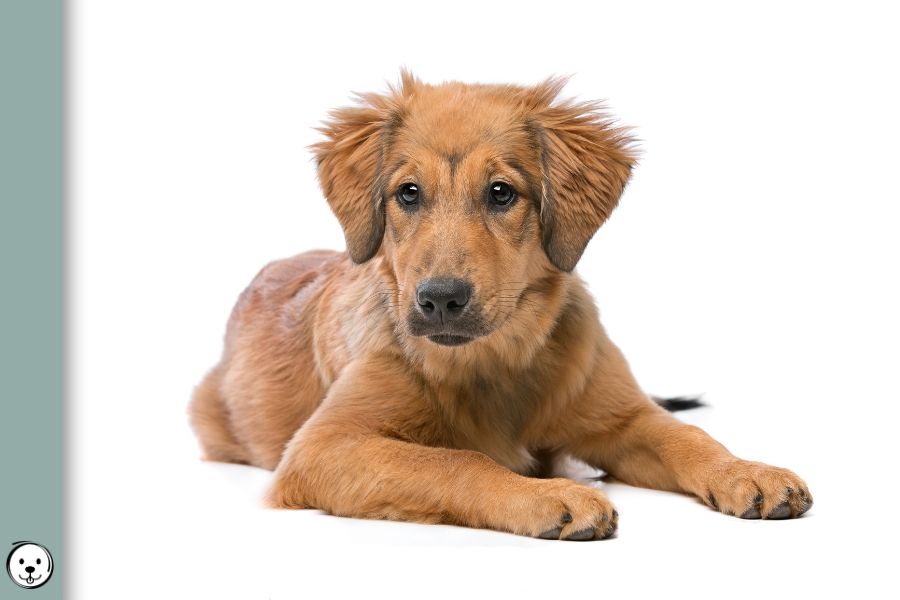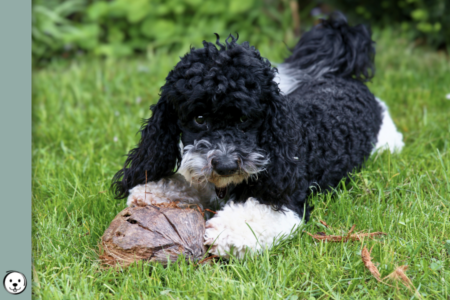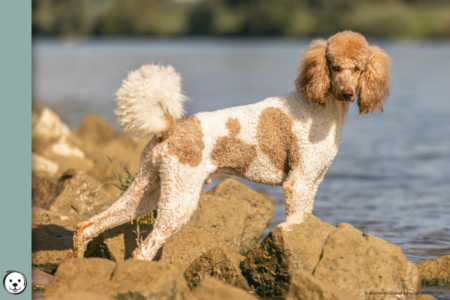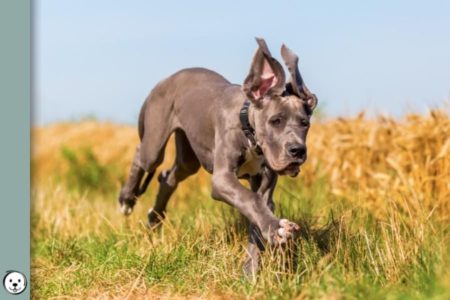Dogs with a black-based sable pattern have a predominantly tan coat with some amount of black-tipped hairs along their upper body. Their sabling can be sparse or heavy.
Sable Colors
Dogs need to be able to express their sable allele (we shortened the new allele names ASIPDY and ASIPSY to Ay). They have to be ky/ky combined with either a mask Em/- or a wild type allele E/-.
The color of eumelanin in their sabling is determined by the B locus and D locus.
The color of their phaeomelanin is determined by red intensity.
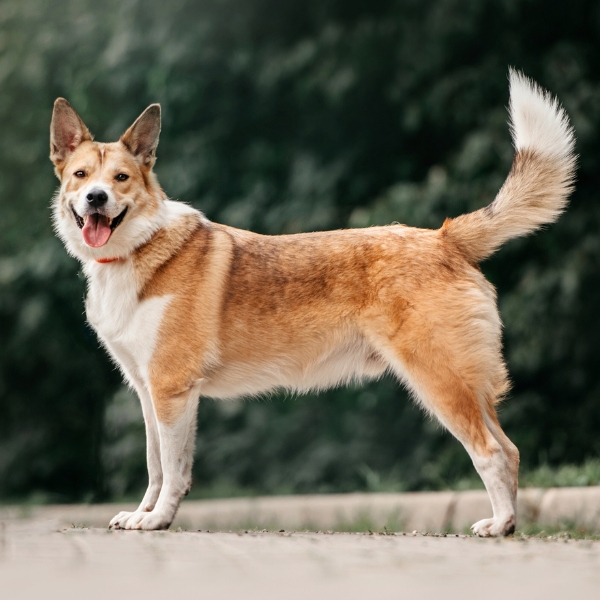
Em/- or E/- ky/ky Ay/- B/- D/-

Em/- or E/- ky/ky Ay/- b/b D/-
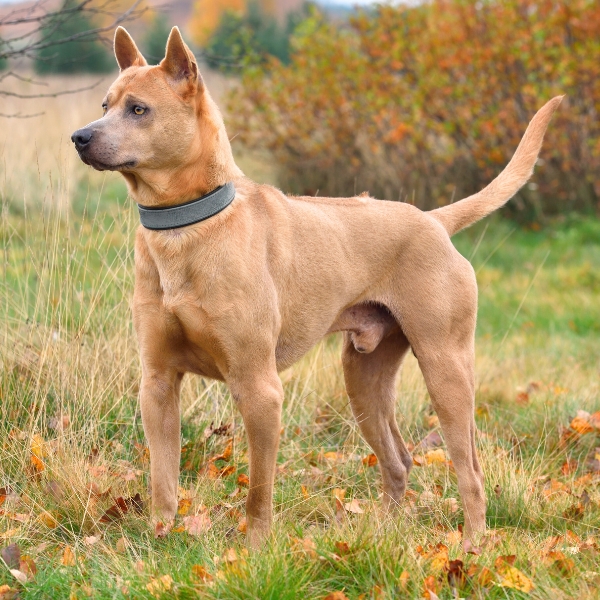
Em/- or E/- ky/ky Ay/- B/- d/d

Em/- or E/- ky/ky Ay/- b/b d/d
Black-Based Sable Pattern
Sable patterns have a tan base coat with yellow to red phaeomelanin. The upper body on a black-based sable dog may show varying amounts of black-tipped hairs.
Sable is one of the various A locus patterns with both red and black pigment.
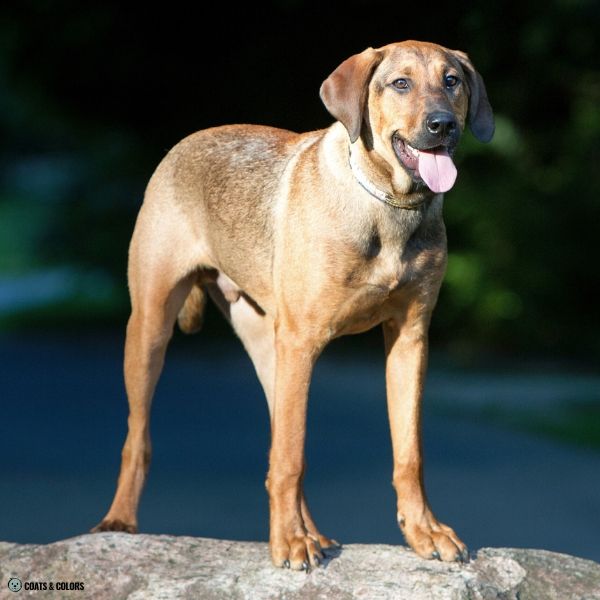
Dogs with a black-based pattern have black eumelanin (B/- D/-).
One dominant B/- at the B locus is enough for them to have black eumelanin. And the D/- at the D locus is responsible for the black not being diluted to blue.

Their black pigment also affects their nose, whiskers, eye rims, lips, nails, paw pads, or skin.
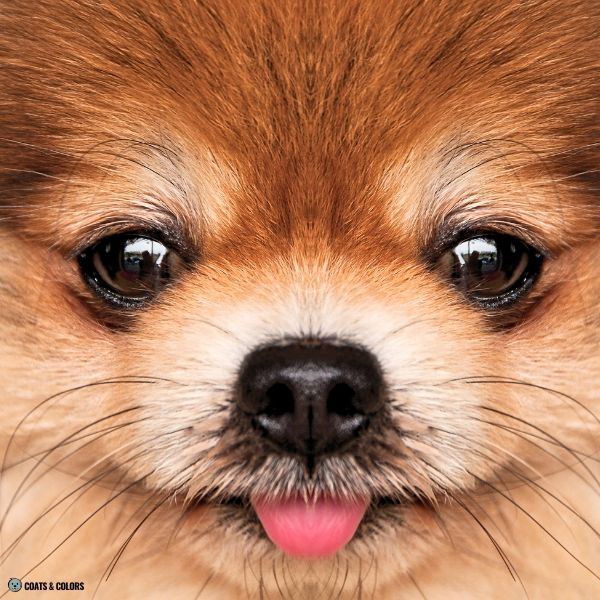
The phaeomelanin intensity on a sable dog can vary from pale yellow to red.
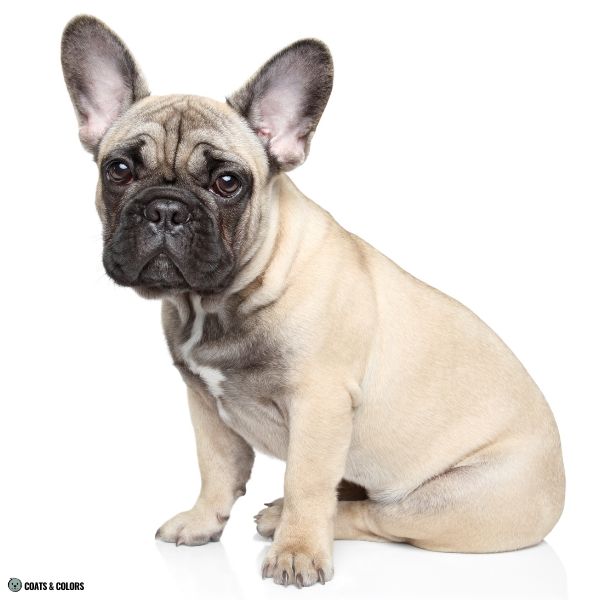

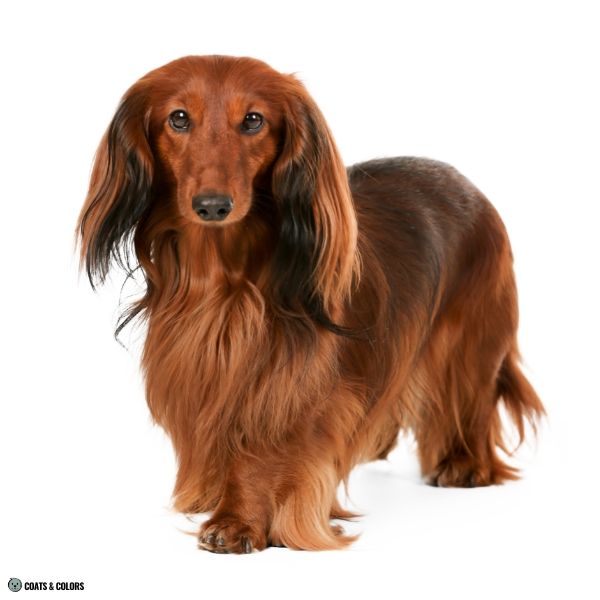
In sable dogs, hairs on the dog’s top start with a dark hair tip which is then followed by mostly phaeomelanin. Sables typically don’t have darker face markings or leg shading.
They have a predominantly tan coat with a little to heavy dark overlay of black-tipped hairs.
If the coat is long enough, you can part it and see the pale roots with the dark ends!
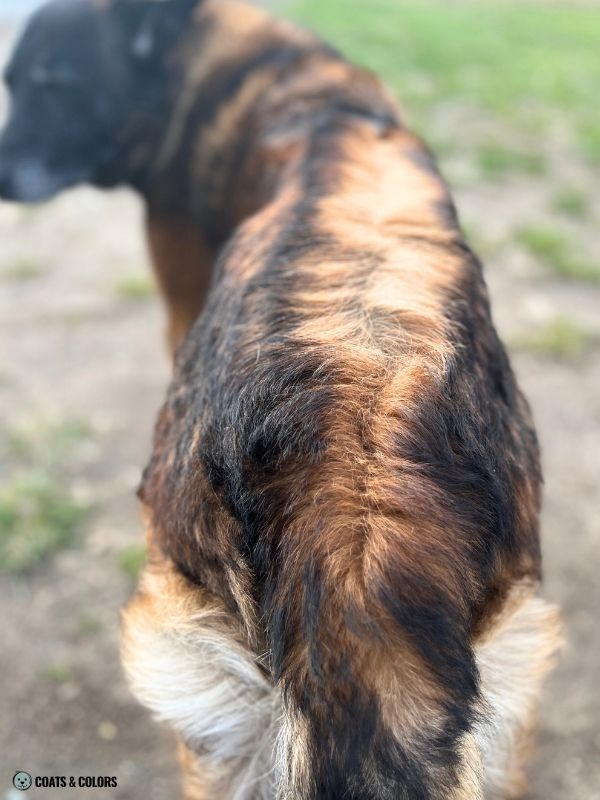
Not all the shaded hairs on a sable dog’s back will always have a pale root and a dark tip. It’s normal to also find some solid black hairs or hairs that have a dark root.
Finding some not perfectly tipped hairs does not mean the dog isn’t sable!
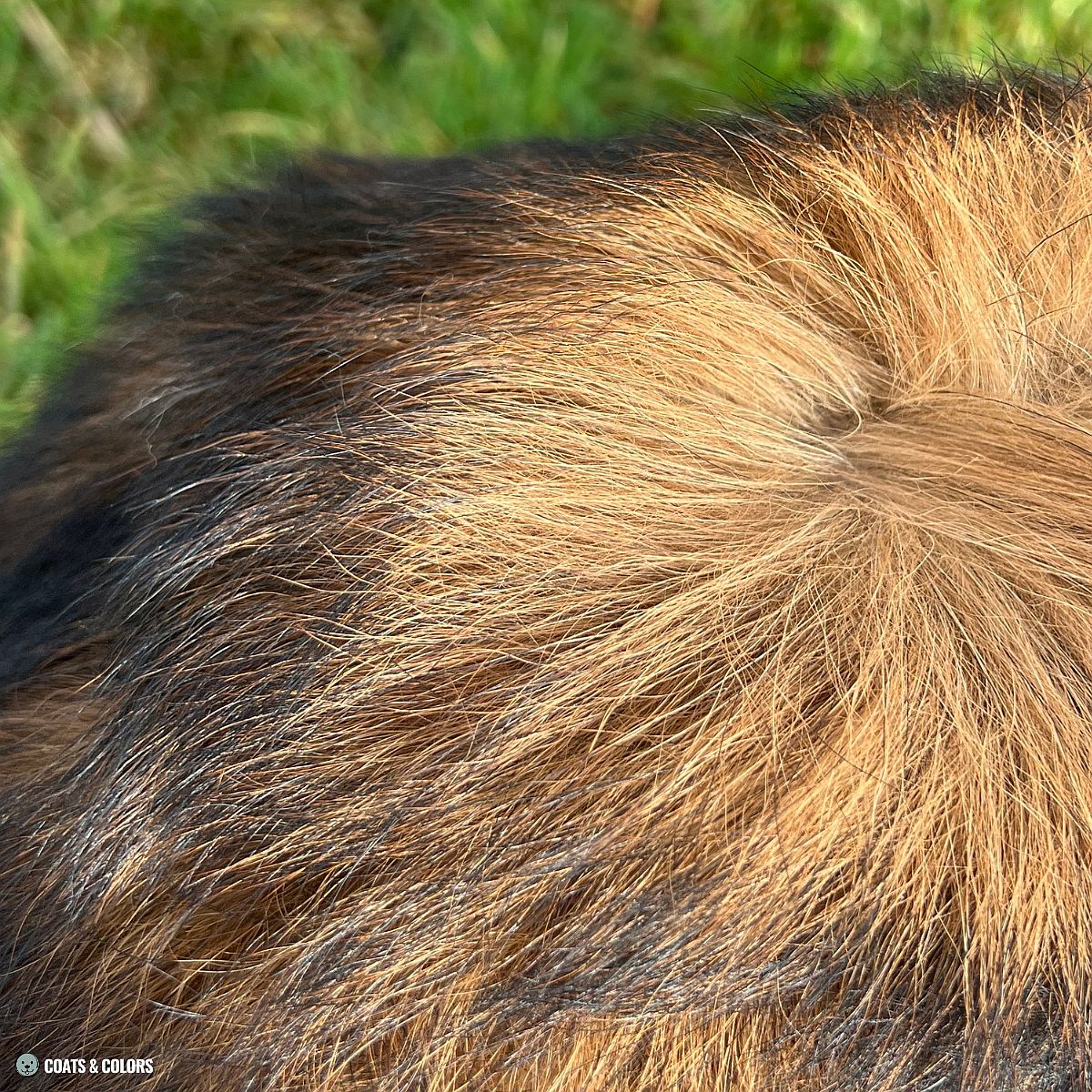
Sabling is found between the forehead and ears, along the topline, and at the top side of the tail.
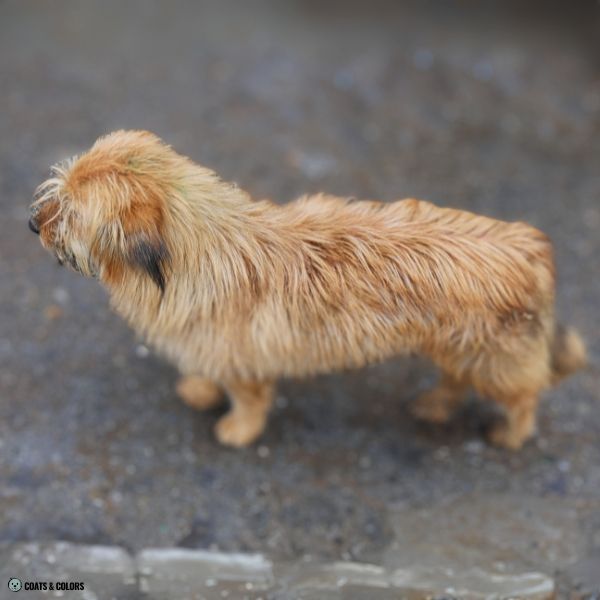
Heavier shading, especially in longhaired dogs, can form a darker half-collar or give dark ear shading. The hair surrounding the tail gland may be covered in a patch of darker hair.
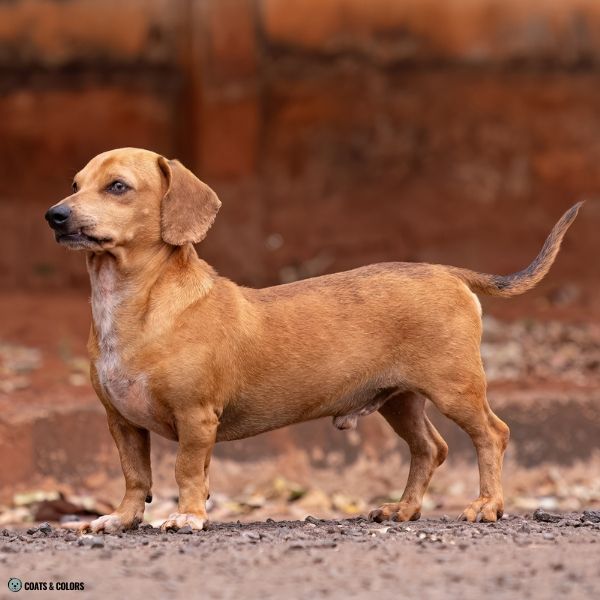
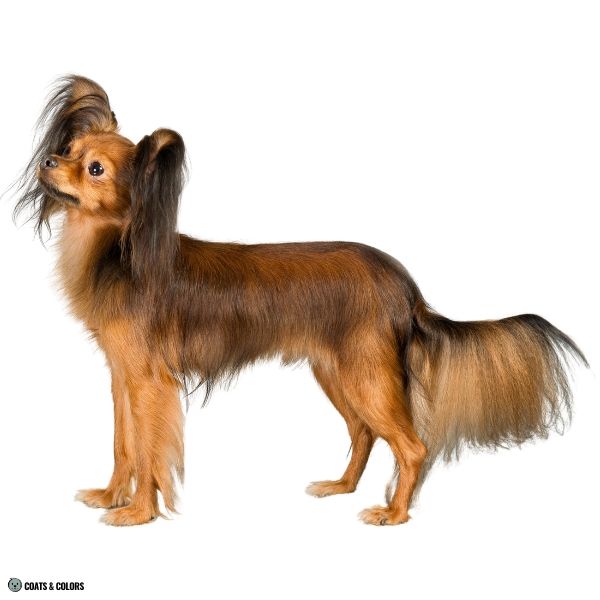
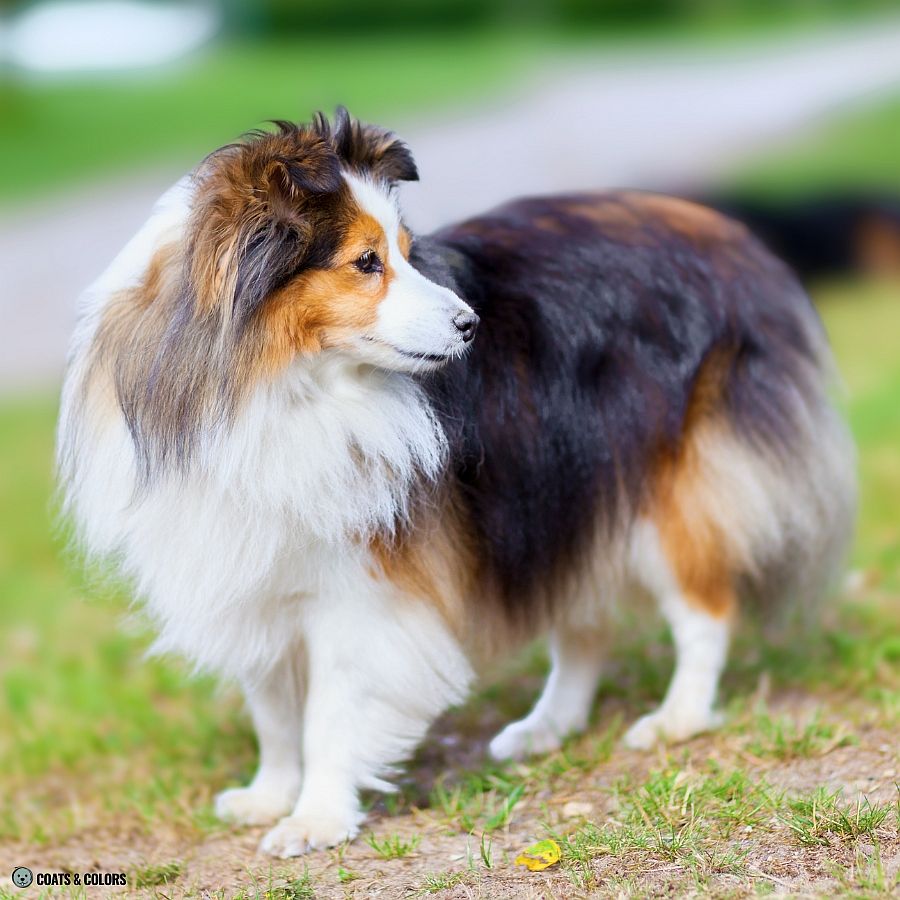
Sable shading can form a widow’s peak on the forehead.
Some sable dogs have a more pronounced widow’s peak than others.
But this darker triangle on the forehead is not unique to the sable pattern. Some agouti and tanpoint domino and some creeping tan phenotypes can also produce a widow’s peak!
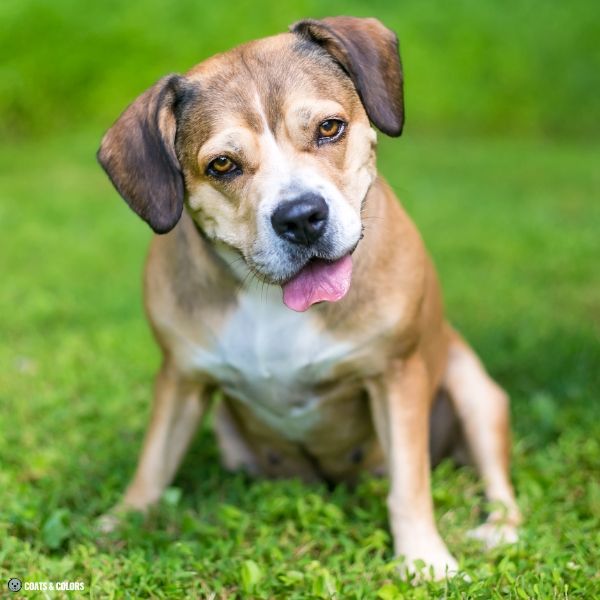
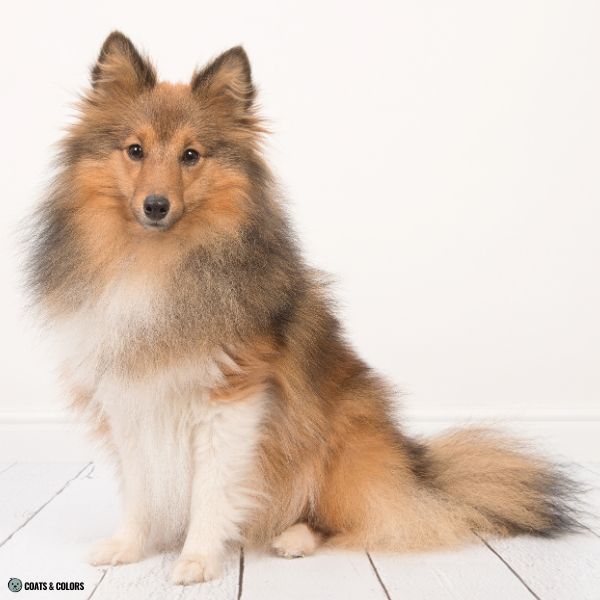
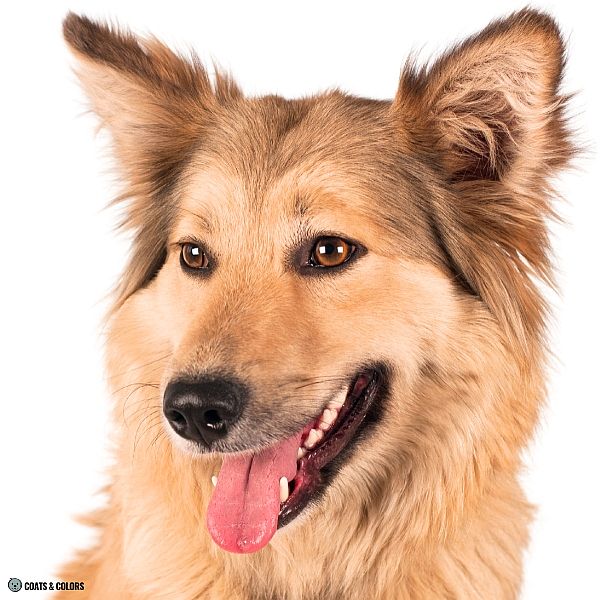
However, sable commonly should not give black down the forelegs or any black shading on the face below the eyes or down the nose (that’s what agouti does).
Sabling should also not cause any black on a dog’s chest or paws (that usually only happens when a sable dog is also heavily masked like in some Malinois or Bavarian Mountain Scent Hounds).
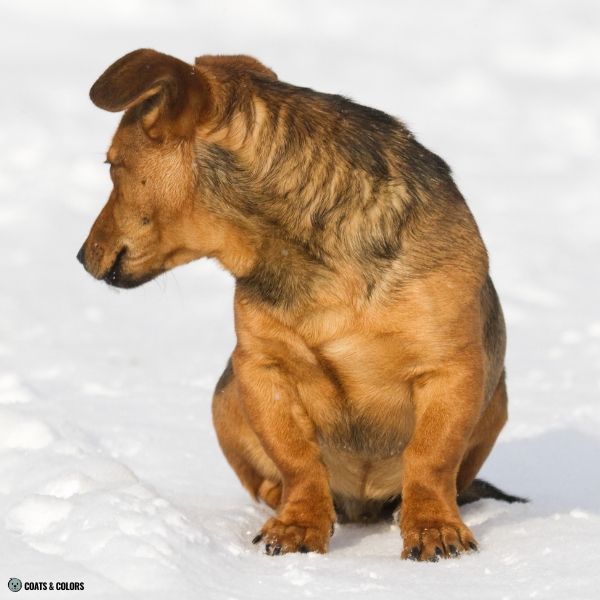
A typical sable pattern usually gives only very clear tan on the face and legs.
However, some very dark shaded sables (often seen in heterozygotes carrying darker patterns such as Ay/at or Ay/a) can actually still show hints of face and leg shading anyway.
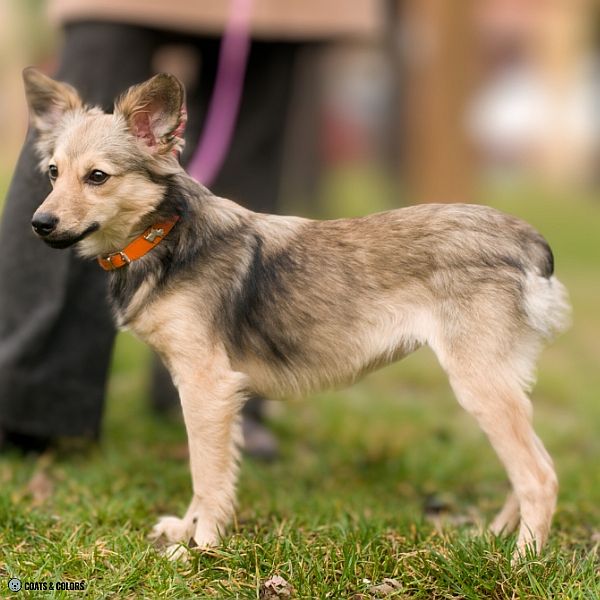


Without the dark hair tips, you get a clear sable pattern. Some very clear sables have a coat so solid red or yellow without any hint of sabling. In this case, they can easily resemble recessive red.
However, even a clear sable shows some black in its puppy coat while recessive red dogs can never produce any black hairs ever. That is why only a real sable can have black whiskers, too.
If a dog has black whiskers, he is not recessive red. But if he has pale whiskers, you may still want to consider the rest of his pattern or do color testing to determine his actual coat color.
Solid yellow mixed breed dogs often get mislabeled as Labradors or Golden Retrievers by animal shelters. But many of these DIY-Retrievers have black whiskers, which gives away their sable pattern.
Keep in mind, not all sables have black whiskers! For example, lots of the white on the muzzle or sable domino can also give white whiskers even on a sable-patterned dog.
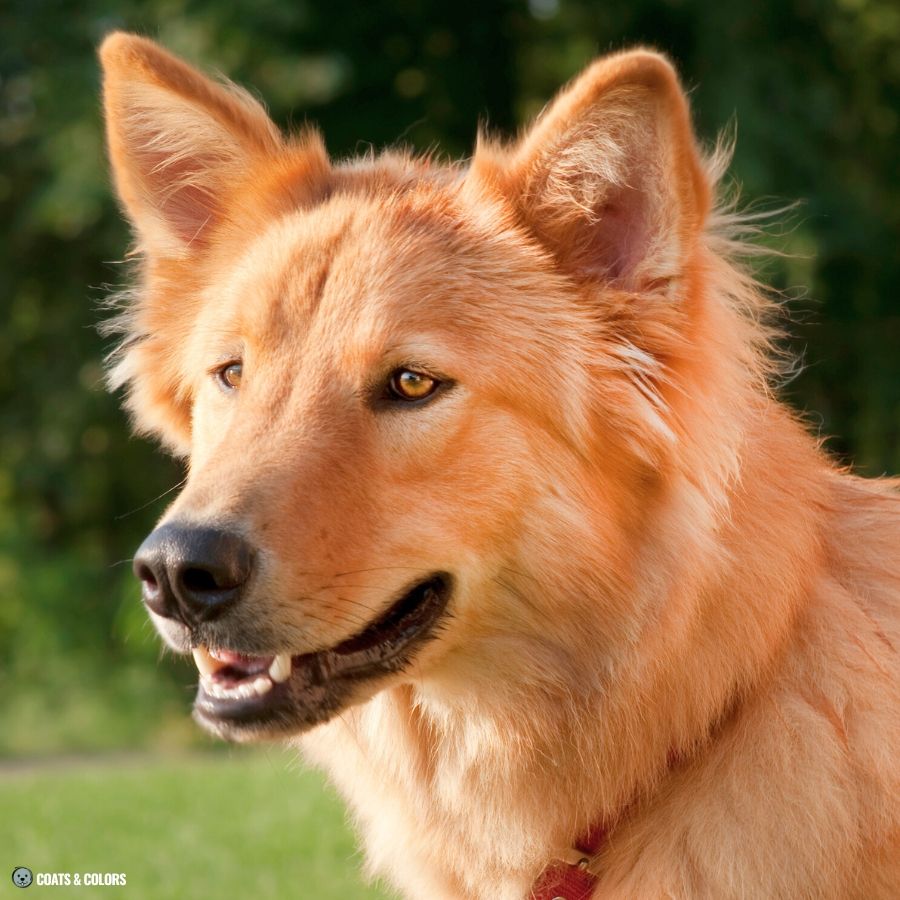


Black-Based Sable Puppy Coat
Young sable puppies usually have much more eumelanin in their coat than adults.
It’s also very common for heavily shaded puppies to be born with so much black that it could easily be mistaken for a tan point pattern. The sable pattern only becomes visible when the black clears.
It is normal for the black to recede as the dog matures. The shading may or may not return, depending on whether the dog ends up with clear sable or shaded sable.


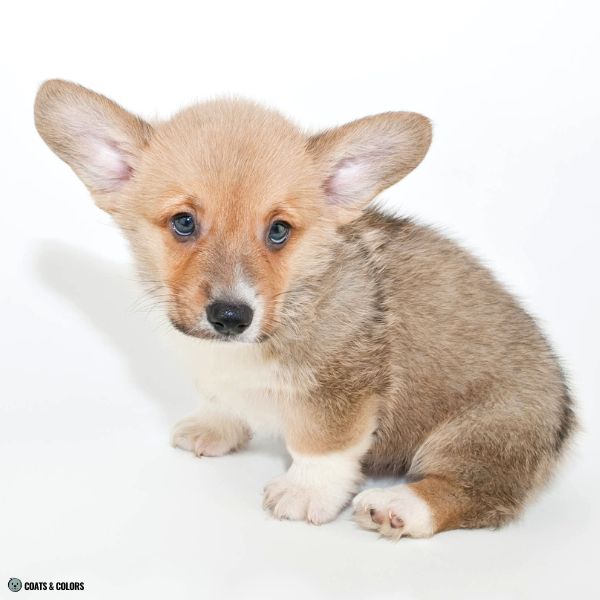

Some sable puppies have more persistent puppy shading than others. It can take a while before all shading disappears from the face and legs, often never to return.
Many shaded sable dogs go through a “pale phase” before their shading eventually returns. That is very normal for young sable and agouti dogs, especially in long-haired puppies.

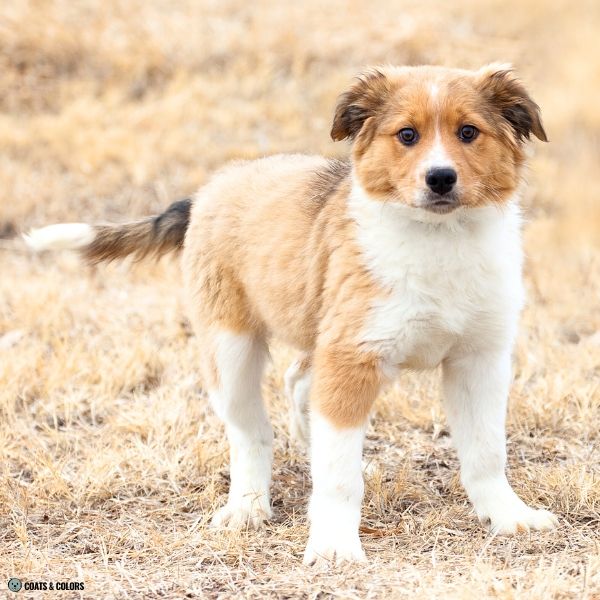
Breed Terms
Black-based sable is easily one of the most common patterns in purebred dogs.
However, sable patterns can be very variable. This is mainly due to different base colors from cream to red and varying amounts of dark shading on top. And sable can also be combined with other traits such as white markings (and ticking), merle, domino, progressive graying, brindle, or black masks.
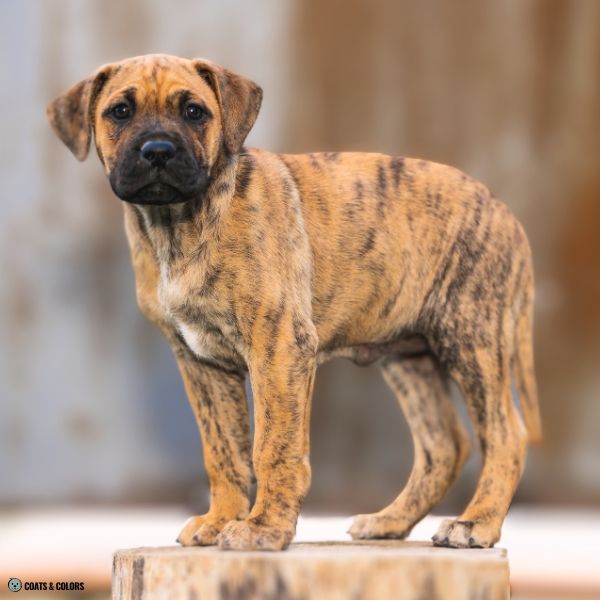
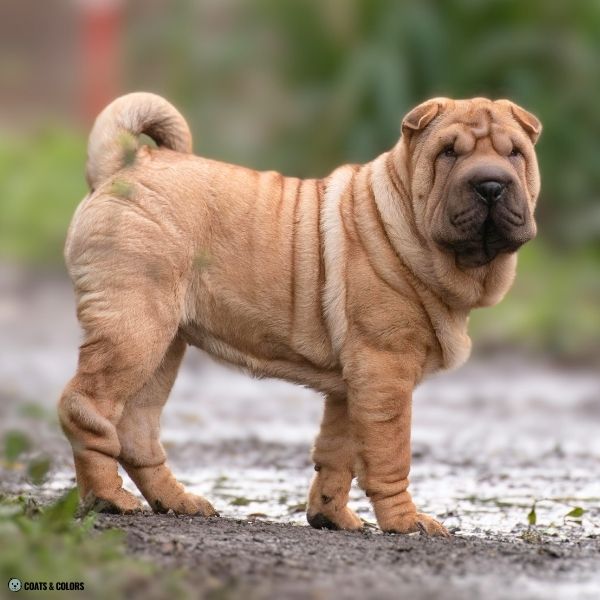
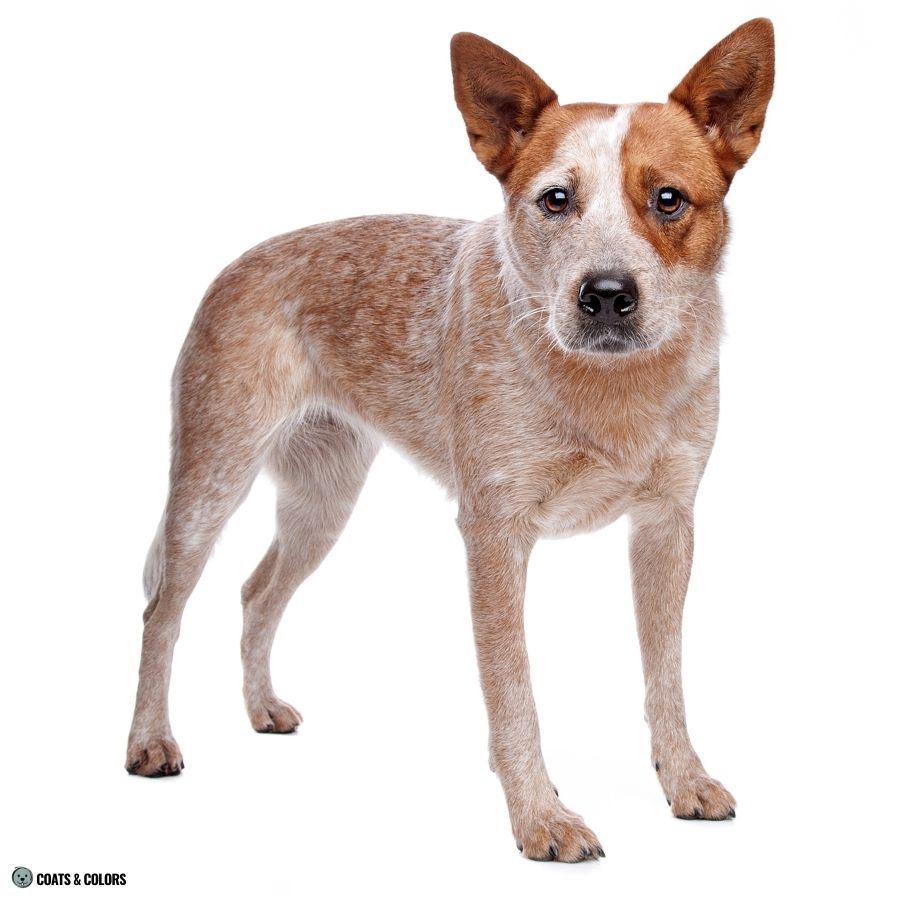
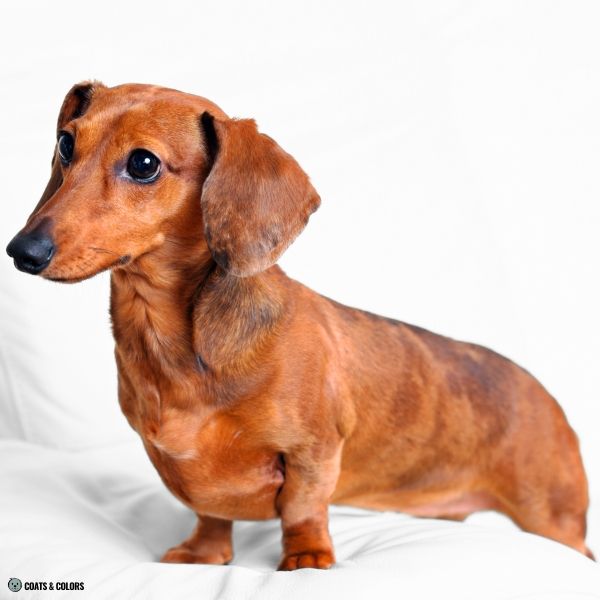

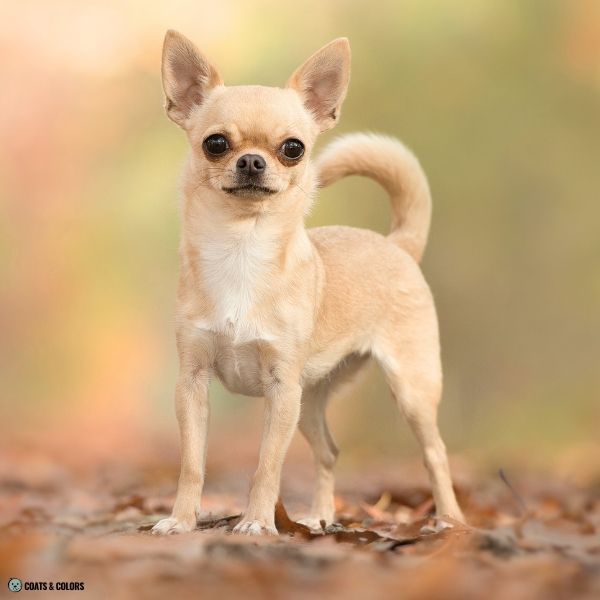
Breed terminology for coat colors can differ wildly from proper genetic terminology!
Collies and Shelties correctly call their red dogs “sable“.
Very many breeds use “fawn” as a breed term for a clear sable pattern. However, the term “fawn” can also be used to describe not the pattern, but a certain phaeomelanin base color in a sable pattern.
In fact, clear sable is very often just named after its base color, think “red” or “yellow” or “sandy” or “cream” or “wheaten” or… a million other names to describe certain shades of phaeomelanin.
Keep in mind, that some breeds may use “brown” to describe a sable base color. However, in genetic terms, phaeomelanin is never brown. Only chocolate-colored eumelanin can be brown. Also, some breeds use “fawn” for diluted brown eumelanin (looking at you, Doberman and Bearded Collie).
Very many breeds like French Bulldogs or Whippets only call a dog “fawn” when he is clear sable. These breeds limit terms such as “sable” or “sabling” or “fawn sable” to shaded sable dogs.
In some breeds like Akitas or Malinois, heavy shading is named “black overlay“.
Some bully breeds may call dogs with dark shading “red smut” or “dirty red” or “grizzled“. And the Cane Corso calls it “carbon“. And I’m sure there are many other names for sable shading.
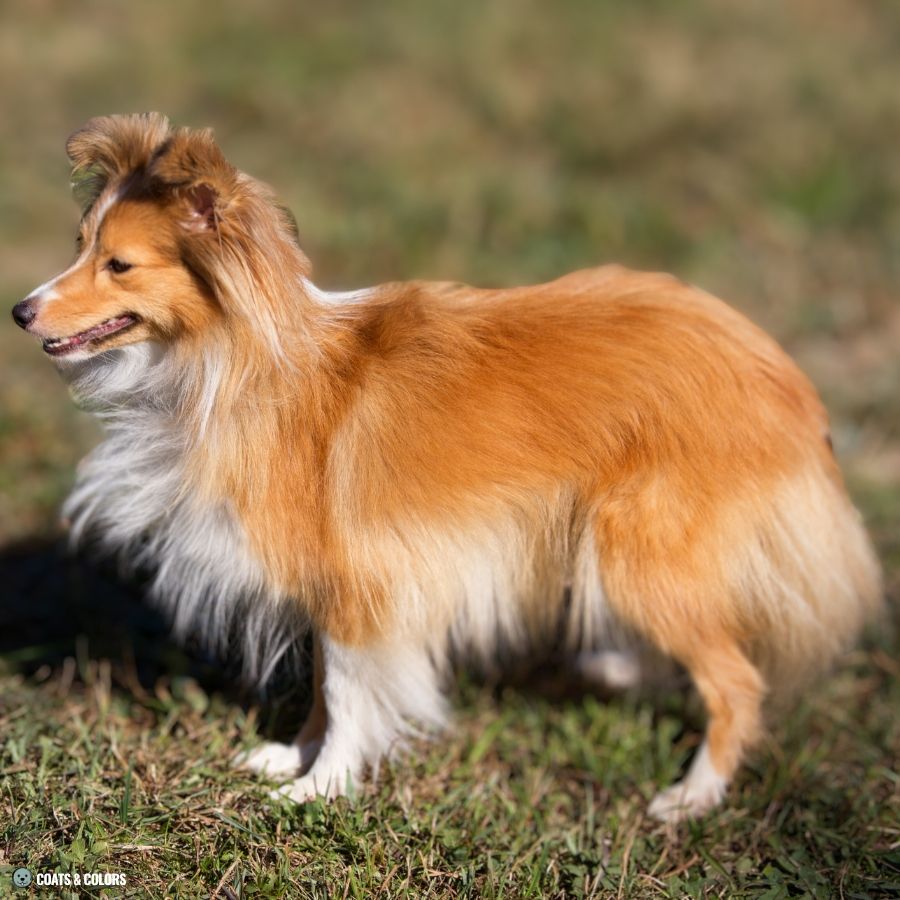
“Sable & White“
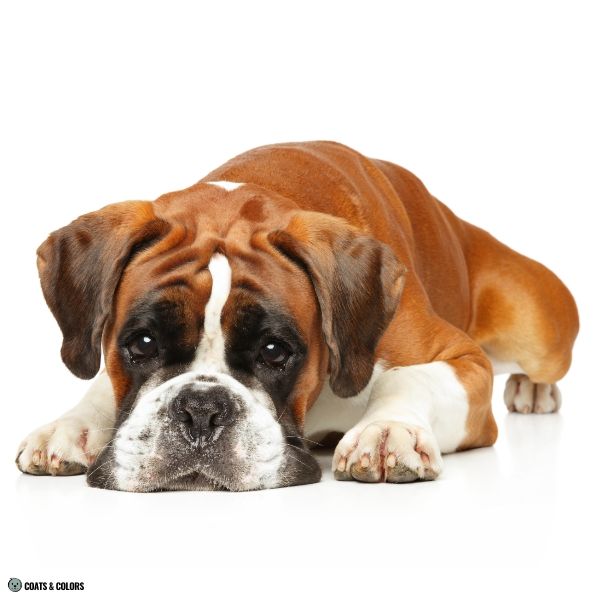
“Fawn, flashy“
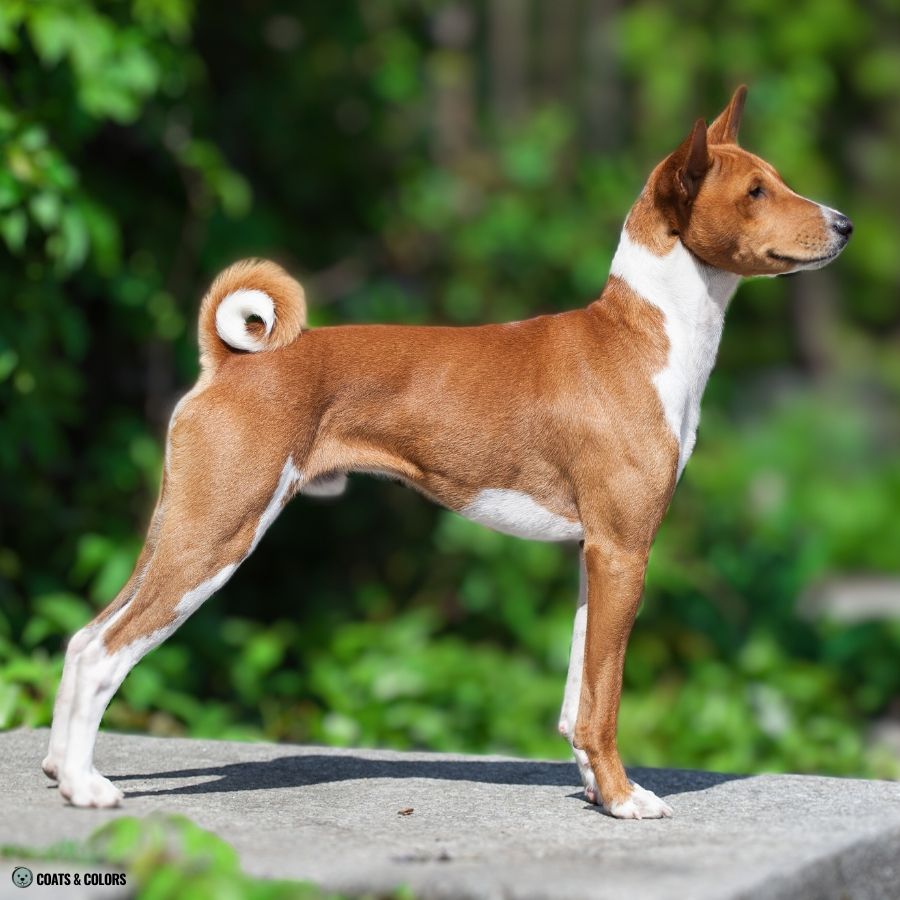
“Red & White“
Finally, some breeds use the term “sable” for patterns that are not sable (Ay):
In German Shepherd Dogs, the breed term “sable” is used for what is actually an agouti pattern (aw). This means a “black sable GSD” refers to a dog with a very dark black-based agouti pattern!
A truly sable-patterned German Shepherd would be called “fawn” or “golden“.
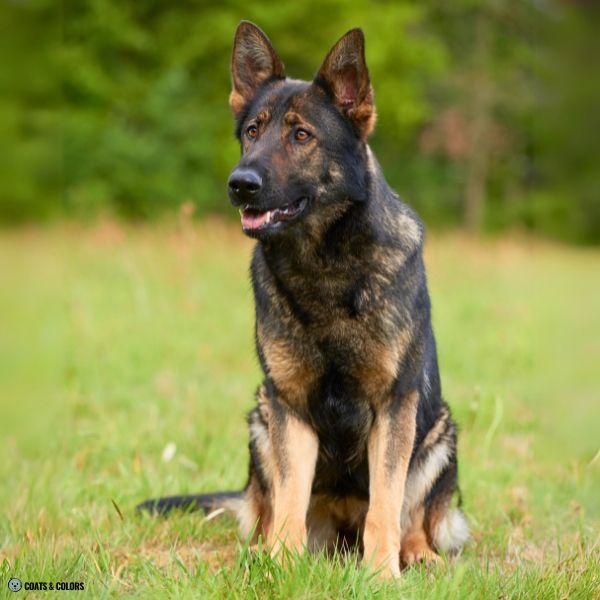

In Cocker Spaniels, the breed term “cocker sable” means KB domino on a tan point pattern (eH/- KB/- at/-). This is a strong version of a KB domino pattern unique to spaniel breeds.

Black-Based Sable Variations
Dogs are not always just sable.
Some other traits can affect how a sable pattern will look like.
- Sable dogs can have any coat type and texture. In longhaired dogs, heavy sabling can sometimes add eumelanin hair tips so long that the dog looks very black-ish on top.
- Also, many longhaired shaded sables tend to darken and lighten depending on the season.
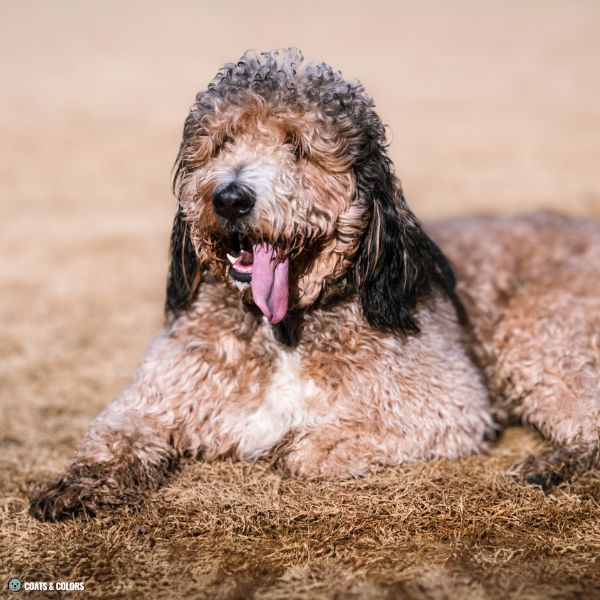

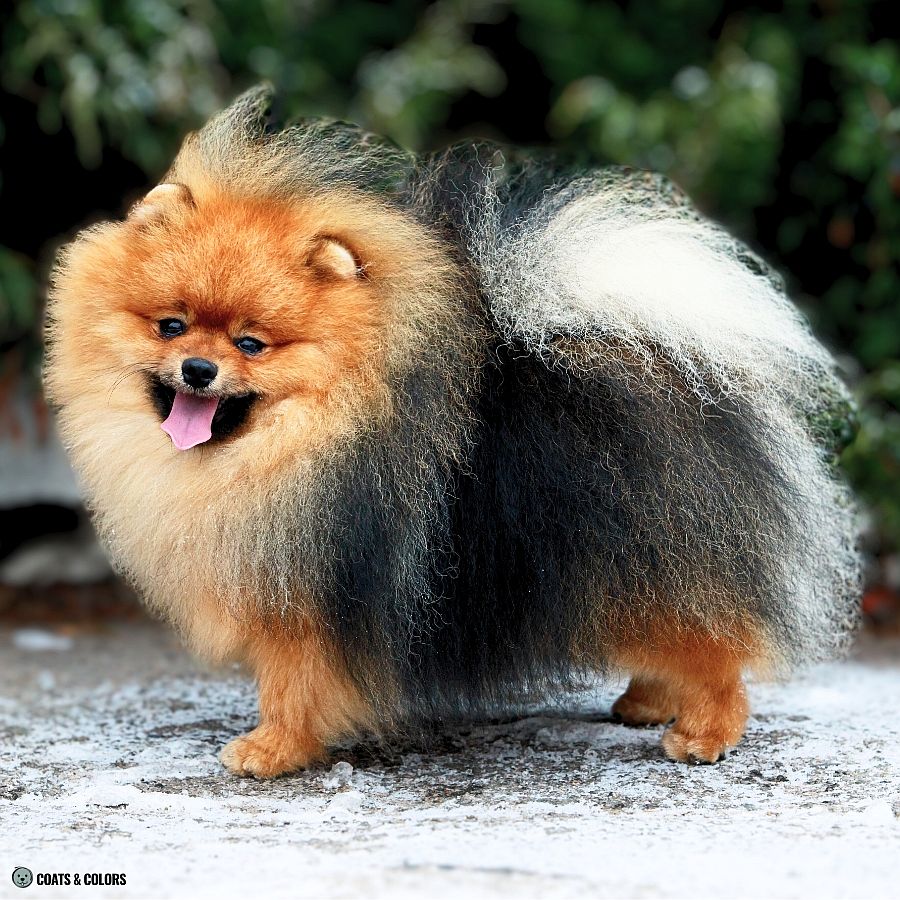
- Countershading can lighten the phaeomelanin base color on the underbody.

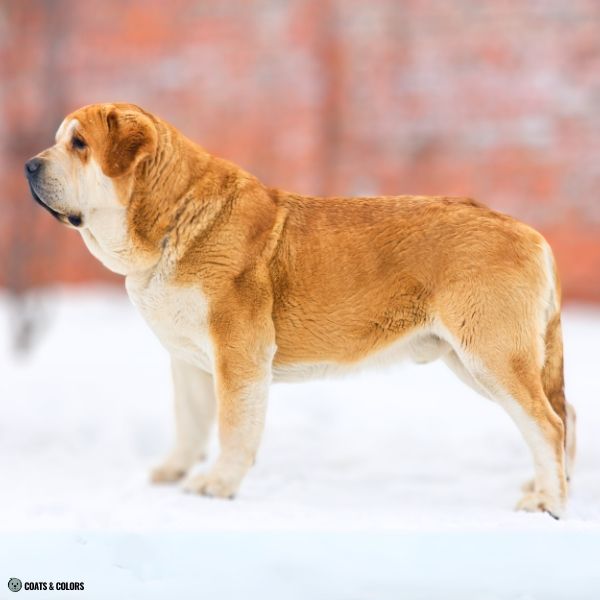
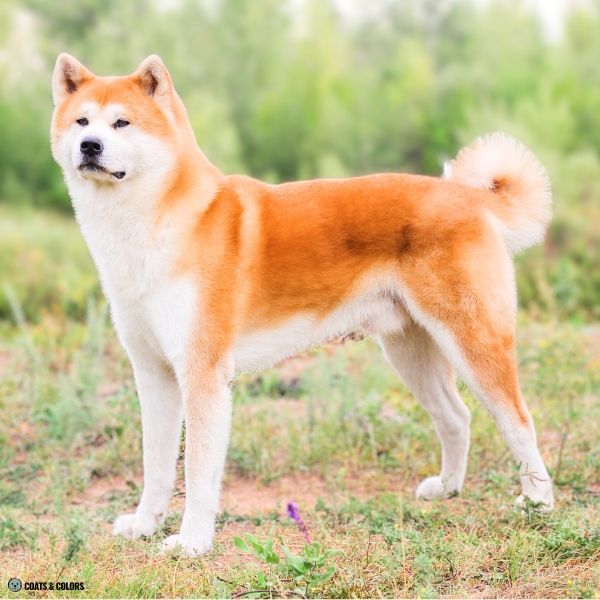



- Black-based sable dogs can have a black mask (Em). In some dogs, extended masks can add quite some dark pigment to a dog’s chest, paws, head, or ears without causing more sabling.
- Some sable dogs might express a faint puppy mask which will fade later on. This is especially common in some Japanese spitz-type breeds like the Shiba Inu or Akita Inu.
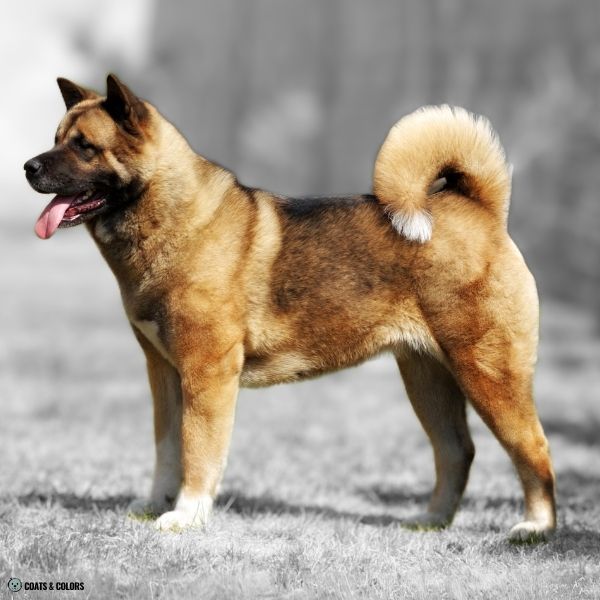


- Most “full brindle” dogs are sable underneath their black striping pattern.
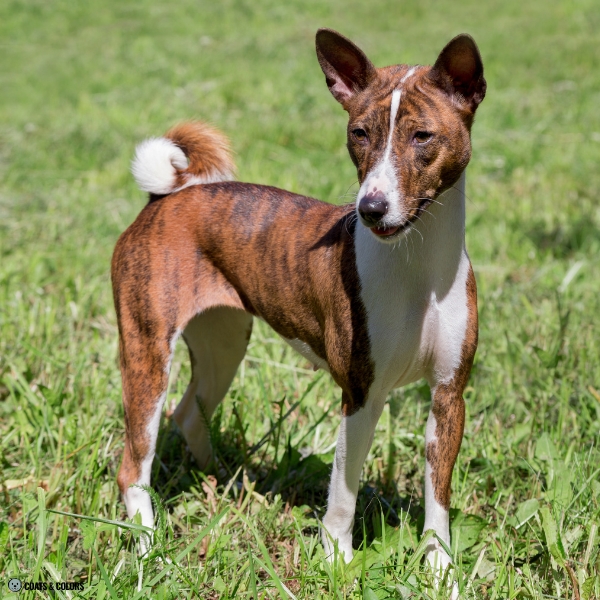
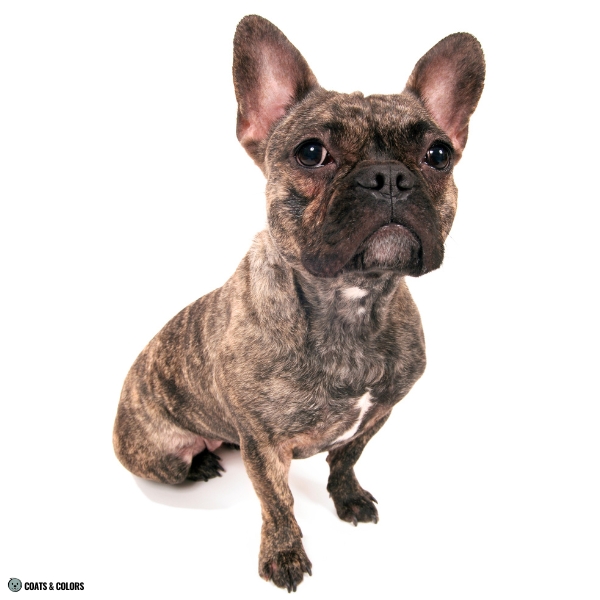
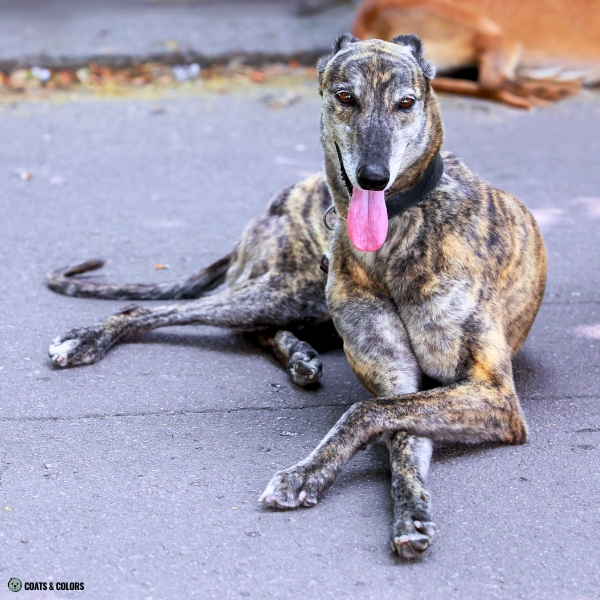
- White spotting can erase some or most of a sable pattern. Some sable and white dogs might express ticking or roan patterns, e.g. in red Australian Cattle Dogs.
Sable combined with a black mask and white markings can give watermarking.

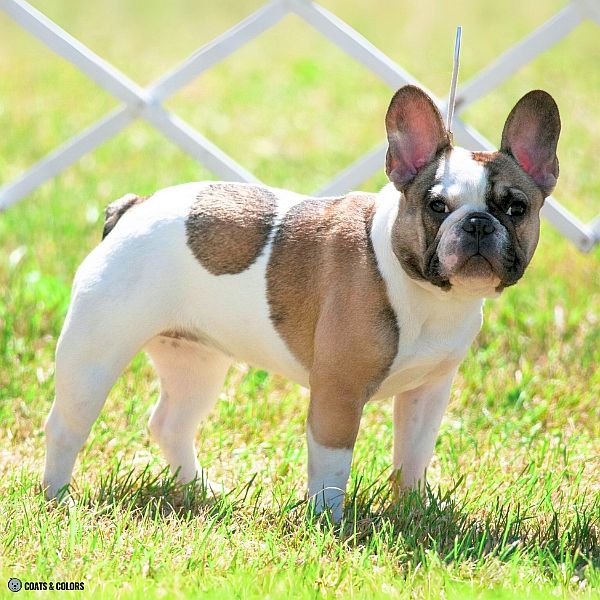
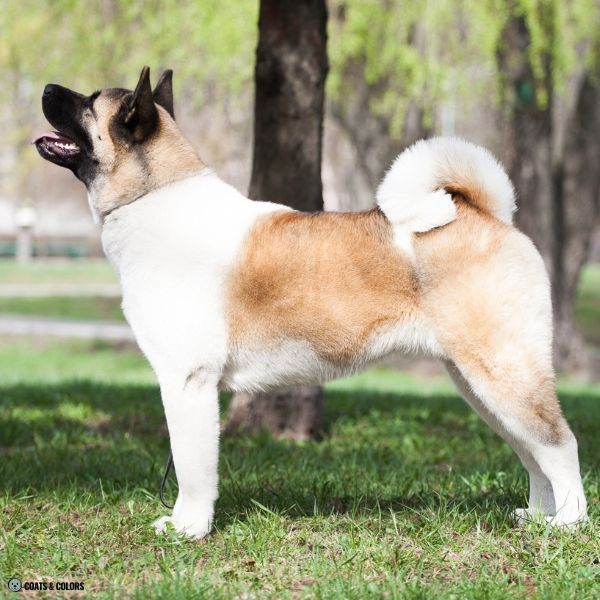


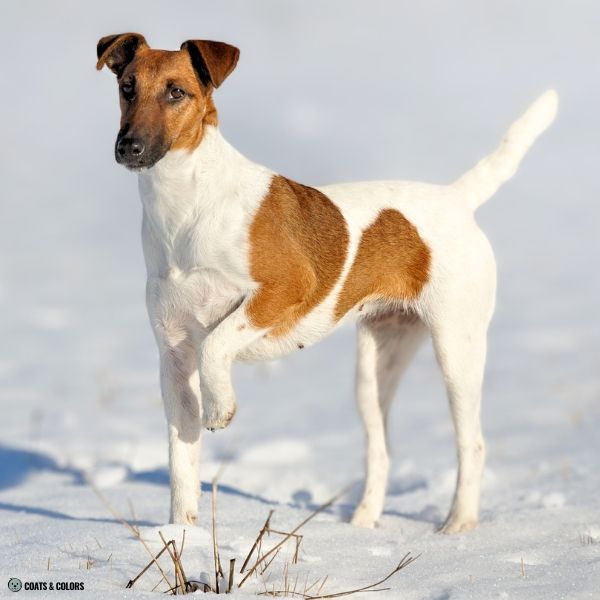
- Dogs can be sable merle.
- Merle requires at least some eumelanin to be visible. In many cases, the merle pattern is only visible as long as a sable dog still has his darker puppy coat. As the black fades, so does the merle.
- A clear sable pattern can mask merle! Any predominantly white, yellow, or red dog should be tested for hidden merle before planning to place him to a merle partner.
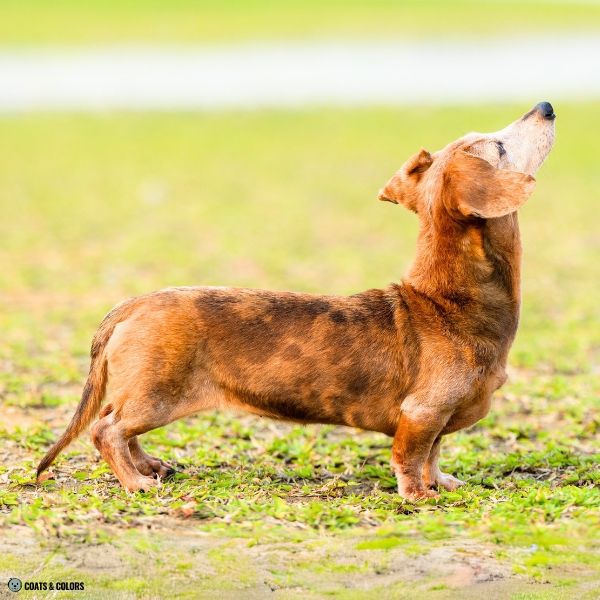
- Progressive graying can cause eumelanin fading.
- It will turn all the black in a pattern to gray over time. Progressive fading only happens in furnished dogs. Some breeds with sable and graying are Irish Wolfhound, Tibetan Terrier, or Havanese.
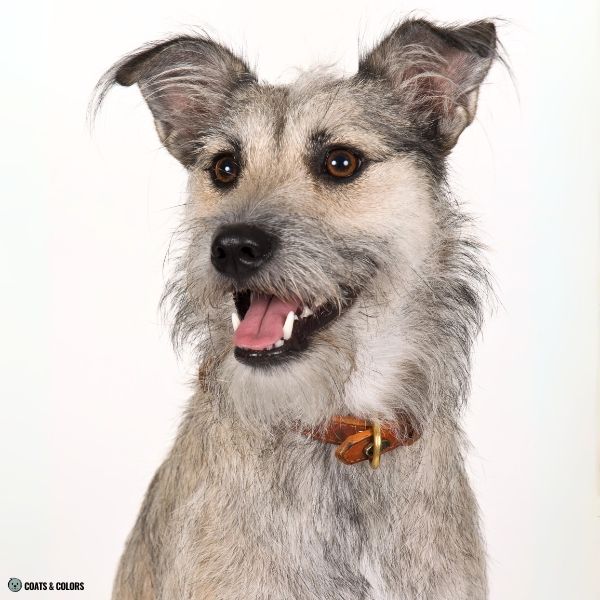
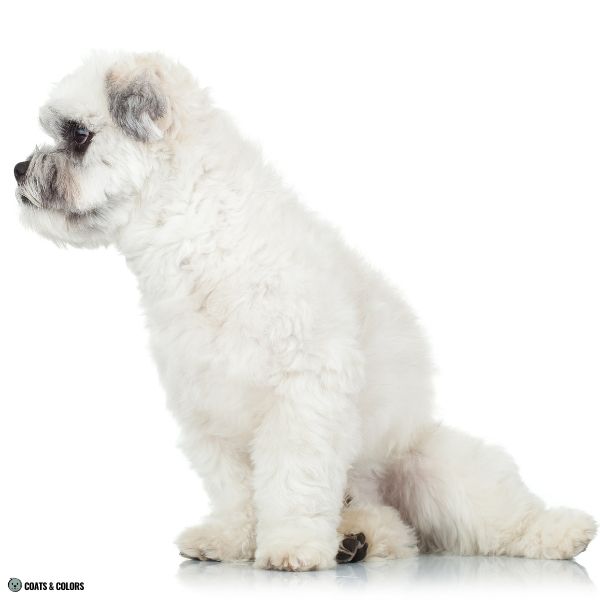
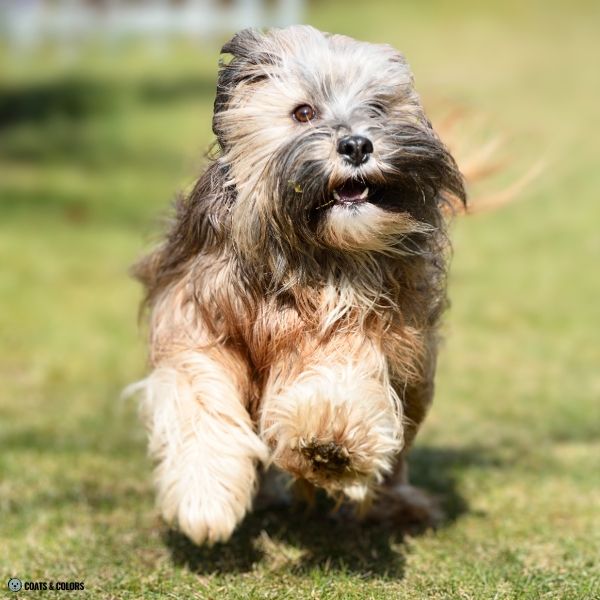
- Domino traits will restrict eumelanin expression and thereby limit the amount of black overlay.
- Domino can remove most or all dark shading from a sable coat. It may also cause a lighter undercoat, an overall lighter shade of phaeomelanin, white whiskers, and it sometimes gives a light nose stripe.
- Domino sable can easily mimic recessive red in adult dogs. Some puppies with this kind of modified sable pattern might still show some very minimal black puppy shading which often fades completely.
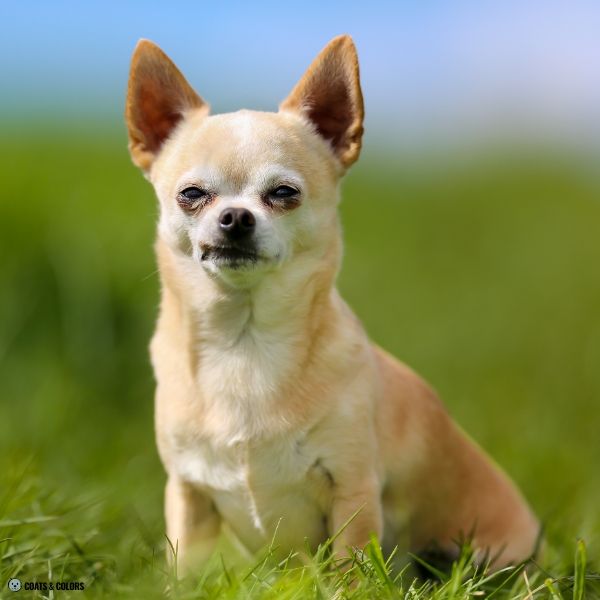
- Seal happens when a dominant black dog’s black is not as opaque as it should be. In some dogs, a hidden “ghost sable” bleeds through, giving a reddish coat on what should be a black dog.
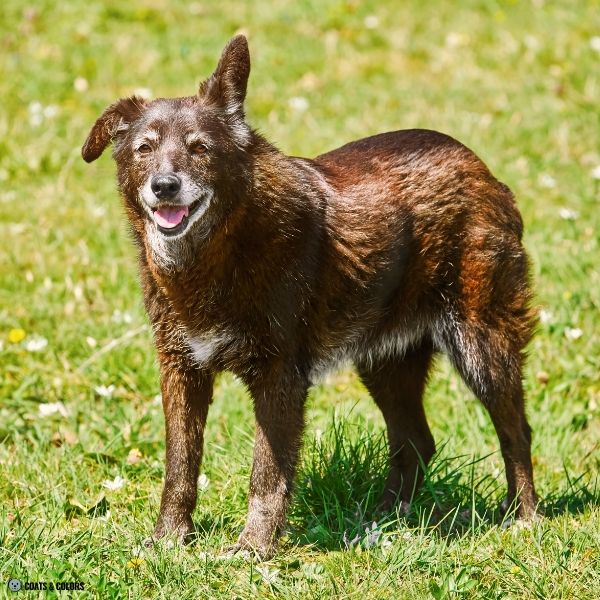
Look-Alikes
If you’re new to coat color genetics, you may have a hard time seeing the difference between a sable and an agouti pattern. But some characteristics set these distinct patterns apart.
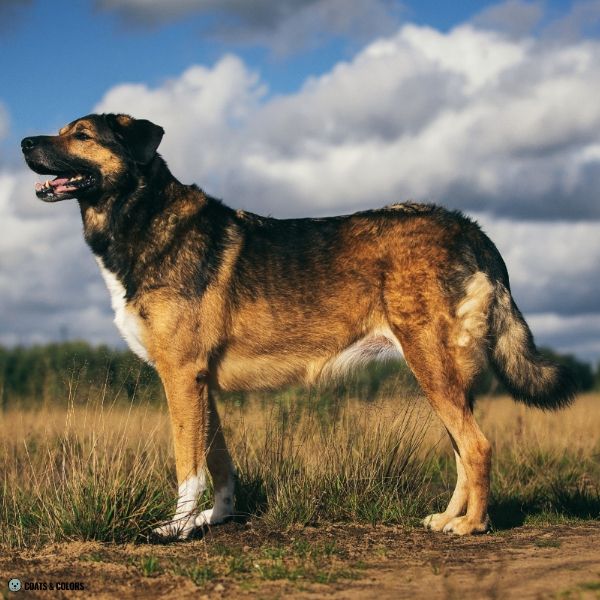

Next, many agouti domino and some stronger tan point domino patterns and even creeping tan phenotypes can produce a widow’s peak and a mostly clear tan face.
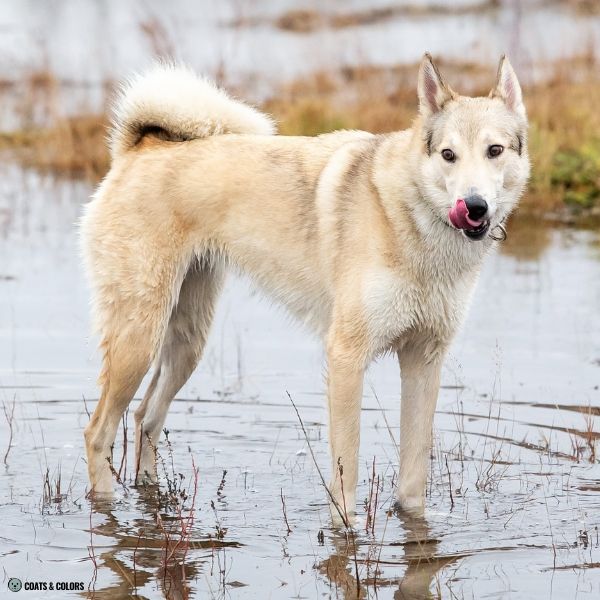
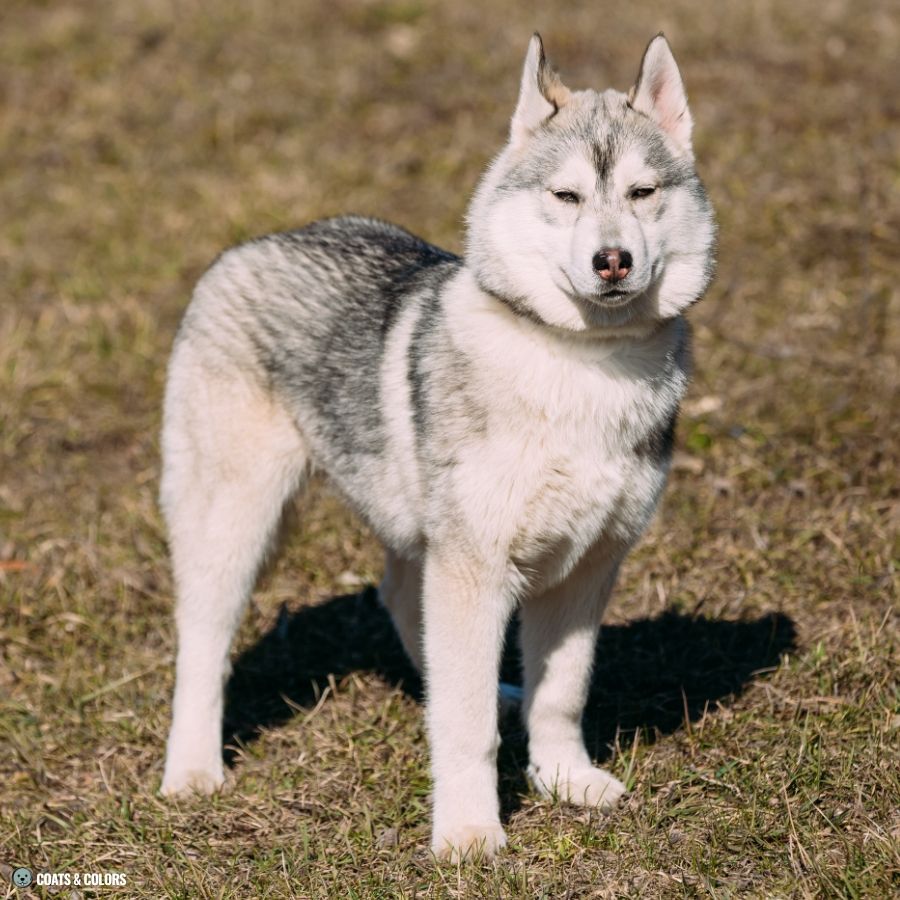
A faded saddle pattern can also resemble sable shading.
A faint saddle-type pattern can happen in an agouti saddle phenotype where only the saddle area shows banded hairs (e.g. “pattern sable” in German Shepherds), or in dogs with a domino saddle (“hare-pied” in Beagles), or in some dogs that just have small-ish saddles or fading saddle pigment.
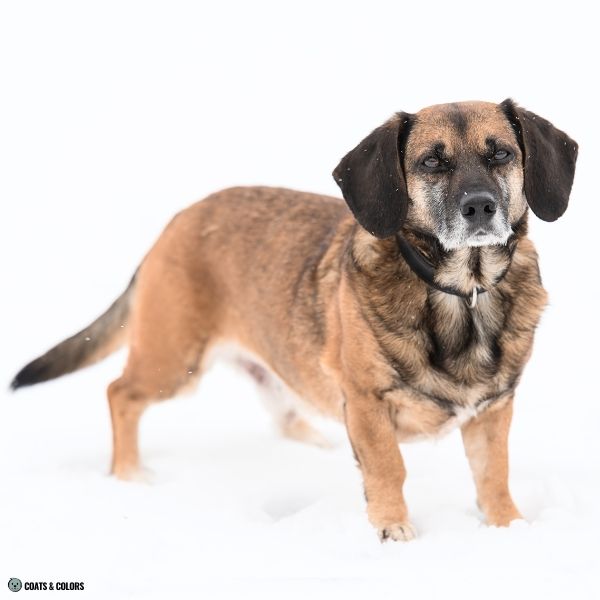

Recessive red (e/e) can be hard to tell apart from clear sable. However, recessive red dogs often have a pale nose and can not produce any black, not even in their whiskers or puppy coats.


Black-Based Sable Genetics
Coat colors are determined by pigment distribution and pigment colors.
Pigment Distribution
The basic pattern of pigment distribution is determined by the A locus, K locus and E locus.
-
Ay/--
ky/ky-
Em/--
sable
mask
-
-
E/--
sable
-
-
eG/-
eA/--
sable
domino
-
-
-
A locus
First of all, dogs with a sable pattern have a sable variant (Ay) at their A locus.
K locus
But to actually express their pattern, they also need to have two copies of the wild-type K locus (ky/ky).
If they have a brindle allele (kbr/-), their sable pattern will have black stripes on top.
E locus
Finally, the E locus also has to make normal pattern expression possible.
Sable dogs can have a black mask (Em/-) or they can have a wild-type allele (E/-) as their dominant E locus allele. Some dogs that appear to be clear sable might actually be sable domino (eG/- or eA/-).
Pigment Colors
Black-based sable dogs have black eumelanin but they can have any shade of phaeomelanin.
Eumelanin
Black is the default color of eumelanin pigment.
Dogs need to have at least one copy for black (B/-) and at least one copy of non-dilute (D/-) to produce black eumelanin. Only for Frenchies: They can also not be cocoa (Co/-).
Intensity
The shade of phaeomelanin can vary depending on red intensity.
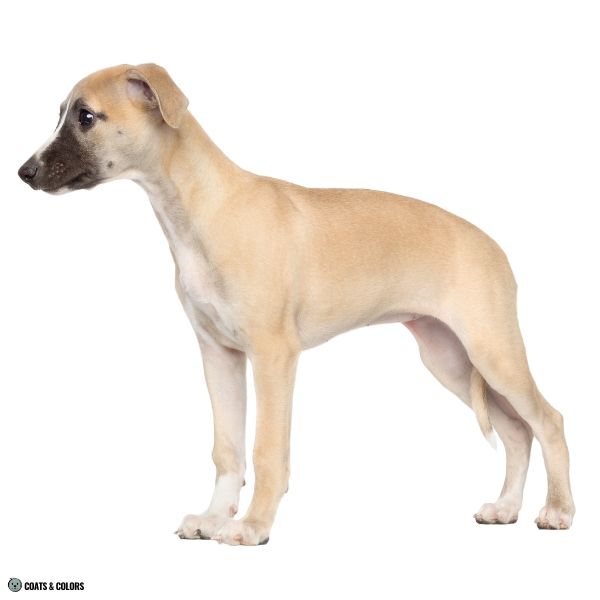

The Sable Allele(s)
Sable is derived from the wild-type agouti by upregulated phaeomelanin production.
In an agouti pattern, dogs have lots of banded hairs on their back, upper arms, and thighs. Their banded coat also gives visible darker face markings around the eyes and down the nose.

Notice the banded leg and face markings
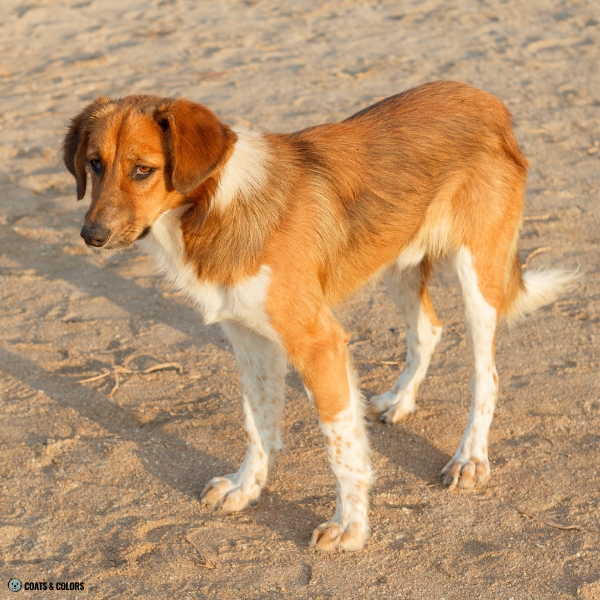
Only moderate shading with clear legs and face
The gene variant responsible for a sable pattern is found at the A locus.
Legacy testing reports both clear and shaded sable as Ay.
Only new testing available at UC Davis distinguishes between two versions of sable:
- clear sable Ay, also called dominant yellow ADY
- shaded sable Ays, also called shaded yellow ASY
ASIPDY > Ays
ASIPSY > aw
ASIPAG > asa
ASIPBS > at
ASIPBB > a
ASIPa
With modern testing, each A locus allele represents a haplotype with a hair cycle promoter (HCP) and a ventral promoter (VP). Different types and combinations of VP and HCP cause distinct phenotypes[2].
Their hair cycle promoter HCP1 is unique to the sable pattern.
This promoter stimulates phaeomelanin production in hair banding, resulting in a distinct pattern with elongated tan bands that differs from the evenly banded wild-type agouti pattern.
Overall, there is a lot of variety to sable patterns.
A locus patterns likely come with some unknown modifiers. For example, the amount of shading can vary a lot between sable-patterned dogs, even between siblings.


Most sable-patterned dogs are born with lots of dark overlay in their puppy coat. However, dogs with a clear sable pattern will lose most of this darker puppy shading.
Dogs with a sable pattern can be homozygous (Ay/Ay) or they can carry any of the other A locus alleles. For example, a dog can be sable and carry tan points (Ay/at).
The A locus patterns tend to show co-dominance in heterozygote dogs. Some intermediate phenotypes in heterozygous dogs can sometimes cause more eumelanin shading than expected.
This situation can be observed in breeds like Shelties where tan point carriers (Ay/at) or recessive black carriers (Ay/a) regularly express more shading than homozygous sable (Ay/Ay) dogs.
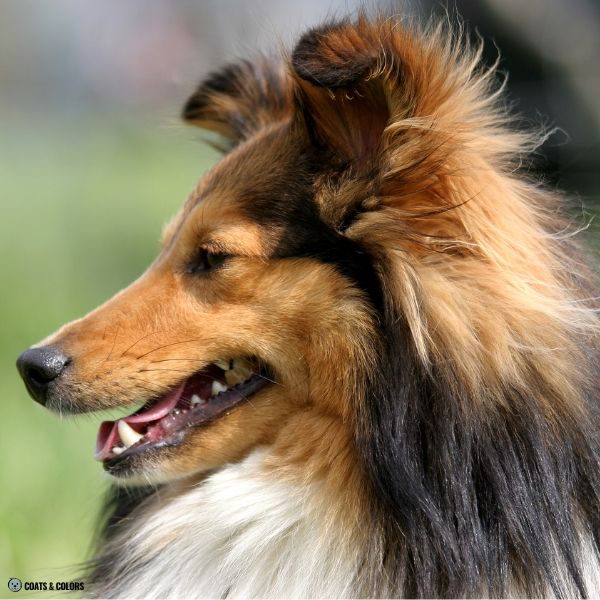
I hope you now have a better understanding of how the sable pattern works in dogs!
Learn More
Links
[1] Dreger et al. (2019). True Colors: Commercially-acquired morphological genotypes reveal hidden allele variation among dog breeds, informing both trait ancestry and breed potential. PLoS ONE 14(10): e0223995. https://doi.org/10.1371/journal.pone.0223995
[2] Bannasch, D.L., Kaelin, C.B., Letko, A. et al. Dog colour patterns explained by modular promoters of ancient canid origin. Nat Ecol Evol 5, 1415–1423 (2021). https://doi.org/10.1038/s41559-021-01524-x

Hi! I’m Steffi. I am a biologist and a big time dog nerd. You are curious about coat color genetics? You’ve come to the right place! Read more.

